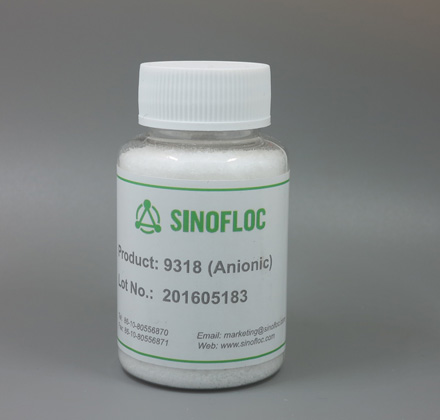The viscosity of polyacrylamide aqueous solution is influenced by the solution viscosity, ph value, shear rate and the relative molecular polymer.
Polyacrylamide solution viscosity and concentration are similar to the logarithmic relationship. High molecular weight polyacrylamide concentration is difficult to deal with when the concentration is over 8%. Increasing the temperature could decrease the viscosity, but the effect is not significant.
The viscosity of nonionic polyacrylamide solution is not affected by the pH value. However, when the PH value is over 9, the viscosity of polyacrylamide is quickly increased due to hydrolysis. At this time, the impact of PH value was revealed. Pure polyacrylamide is easy to hydrolyze. In the aqueous solution, when the PH value from acid to alkaline range, the non-ionic amide to anionic carboxyl, carboxyl negatively charged and produce repulsion, resulting in macromolecule stiffness, increasing the friction between molecules, viscosity and thus significantly to increase this phenomenon. This only happens in the solution after a period of time. In the solution after 3h action measured viscosity cannot see this phenomenon.
Polyacrylamide is a non-Newtonian fluid that exhibits pseudoplasticity under shear conditions. The speed increases, that is, the shear rate increases and the viscosity decreases. This phenomenon can be explained by the concept of entanglement of polymer chains. As the shear rate increases, the number of entanglement points is reduced, resulting in a decrease in viscosity.
Temperature on will also affect viscosity of anionic polyacrylamide. Temperature is a reflection of the intensity of the random motion of molecules. The movement of molecules must overcome the intermolecular interactions, and the interactions between molecules, such as intermolecular hydrogen bonds, internal friction, diffusion, molecular chain orientation, directly affect the viscosity of the size, so the polymer solution viscosity will change with temperature. The effect of temperature change on the viscosity of the polymer solution is significant. The viscosity of the anionic polyacrylamide solution decreases with increasing temperature due to the fact that the dispersed phase particles of the polymer solution are entangled with each other to form a polymer of a network structure. When the temperature is higher, the network structure is more easily destroyed, and the viscosity will decline.
TDS Degree will affect the viscosity of anionic polyacrylamide. The cationic groups in the anionic polyacrylamide molecular chain are more than the number of anionic groups, the net charge is more, and the polarity is larger. As the H2O is the polar molecule, according to the similarity principle, the water solubility of the polymer is better and the viscosity is higher. As the TDS increases, the positive electrostatic charge is surrounded by anions to form an ionic atmosphere, which is combined with the surrounding electrostatic charge, the polarity of the polymer solution decreases and the viscosity decreases; the mineral concentration continues to increase , positive and negative ion groups form intermolecular or intermolecular hydrogen bonds (resulting in a decrease in the solubility of the polymer in water), while the addition of salt ions by blocking the positive and negative charges, breaking the positive and negative ions between the association The resulting salt bond is damaged (resulting in an increase in the solubility of the polymer in water), both of which compete with each other so that the viscosity of the polymer solution at a higher salt concentration remains low viscosity.
